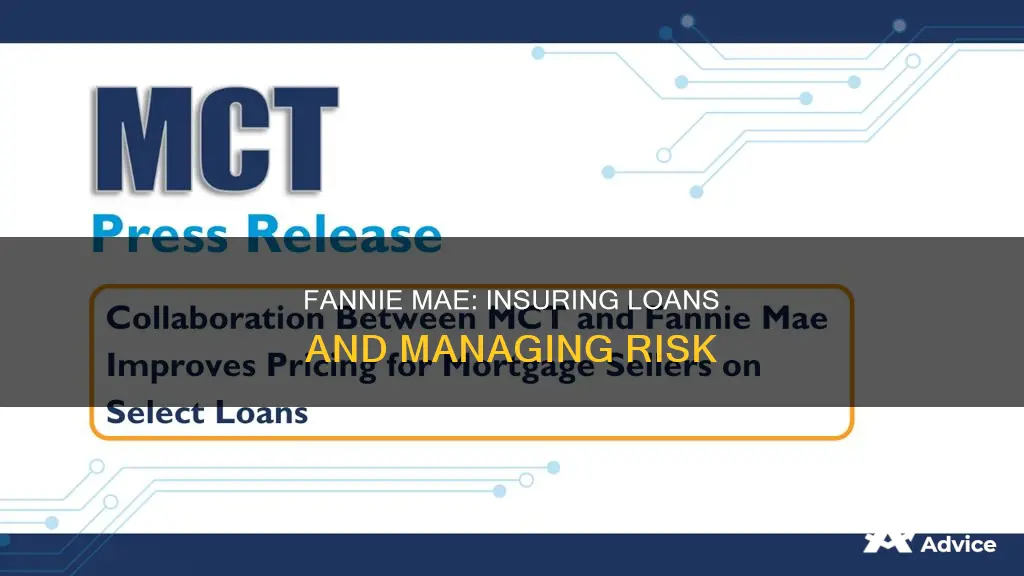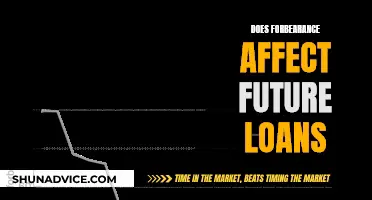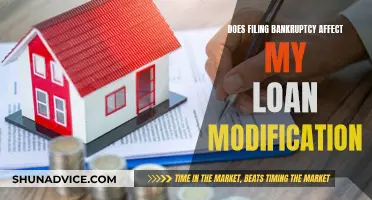
The Federal National Mortgage Association (FNMA), or Fannie Mae, is a government-sponsored enterprise that purchases and backs mortgage loans for borrowers. It was created by the United States Congress in response to the Great Depression, which saw annual foreclosure rates rise every year from 1926 to 1934, peaking at over 12%. Fannie Mae does not lend money directly to borrowers but instead purchases mortgage loans from lenders, who can then use those funds to offer more mortgage loans. It also guarantees these loans, reducing the risk to banks and making them more willing to loan money. While most mortgages backed by Fannie Mae are conventional loans, which are not insured by the government, it does require mortgage insurance for certain loans.
| Characteristics | Values |
|---|---|
| Nature of Enterprise | Government-sponsored |
| Type of Loans | Conventional |
| Type of Insurance | Mortgage |
| Insurance Providers | Private mortgage insurers or state or local insuring agencies |
| Insurance Requirements | LTV ratio greater than 80% |
| Insurance Forms | Fannie Mae-approved Forms |
| Insurance Master Policy | Modifications to terms prohibited |
| Insurance Status | Lenders to notify Fannie Mae |
| Insurance or Guaranty Not Obtained | Lender to repurchase mortgage |
What You'll Learn

Fannie Mae is a government-sponsored enterprise
The Federal National Mortgage Association (FNMA), or Fannie Mae, is a government-sponsored enterprise (GSE) that purchases mortgage loans from commercial banks and other lenders and guarantees or backs these loans on the secondary mortgage market. This reduces the risks to banks and makes them more willing to loan money. In 2022, Fannie Mae helped 542,740 people buy their own homes for the first time. It helped 2.6 million households buy, refinance, or rent a home.
Fannie Mae was created by the United States Congress in response to the Great Depression, which saw annual foreclosure rates rise every year from 1926 until 1934, when the rate peaked at over 12%. The aim was to open up a stream of financing for home purchases, making it available even to those with modest incomes. This led to the modern system of long-term, fixed-rate mortgages that could be refinanced at any point during the loan.
Fannie Mae does not lend money directly to borrowers. Instead, it purchases mortgage loans made by lenders, who can then use those funds to offer mortgage loans to more people. It also provides liquidity to the markets by buying mortgages and pooling them into mortgage-backed securities (MBS), which are then purchased as investments by large institutional buyers. This, in turn, frees up lenders to offer more mortgages.
Fannie Mae also provides educational resources to help households make informed housing decisions. It offers useful information about renting, buying, and owning a home, from HomeView®, its comprehensive online course for first-time homebuyers, to interactive tools and calculators to help make informed housing decisions. It also provides access to housing counselors and other resources to help guide financial recovery in the event of difficult circumstances.
Explore Loan Recast Options: Not All Lenders Are Equal
You may want to see also

It purchases and backs mortgage loans
The Federal National Mortgage Association (FNMA), or Fannie Mae, is a government-sponsored enterprise that purchases and backs mortgage loans for borrowers. It does not lend money directly to borrowers or originate mortgage loans. Instead, it purchases mortgage loans from commercial banks and other lenders and guarantees or backs these loans on the secondary mortgage market. This reduces the risks to banks and other lenders, making them more willing to loan money. By purchasing mortgages, Fannie Mae adds liquidity to the banking system, enabling lenders to offer more stable, predictable, long-term, fixed-rate mortgages to homeowners.
Fannie Mae's mission is to "facilitate equitable and sustainable access to homeownership and quality, affordable rental housing across America." It achieves this through three key methods: enabling liquidity in the mortgage market, providing programs and tools to make homeownership more attainable and affordable, and educating homeowners and renters on aspects of the housing market, including foreclosure prevention.
Fannie Mae also provides educational resources to help households make informed housing decisions. Its HomeView® online course for first-time homebuyers, interactive tools, and calculators help individuals make informed choices about renting, buying, and owning a home. Additionally, it offers financial and disaster relief resources, including access to housing counselors, to support individuals facing financial difficulties or disasters.
Fannie Mae purchases mortgage loans that meet specific criteria and conforms to the guidelines it establishes. Most of the single-family loans it acquires are assessed using its proprietary automated underwriting system, Desktop Underwriter® (DU®). It also sets servicing standards, including borrower assistance options for homeowners facing financial challenges.
Fannie Mae requires lenders to ensure that any mortgage insurance it mandates for a mortgage loan is in place. Lenders must obtain and provide evidence of any required mortgage insurance or loan guarantees. Conventional mortgages may be insured by private mortgage insurers or state or local insuring agencies that meet Fannie Mae's Qualified Mortgage Insurer Approval Requirements. The form of mortgage insurance policy must be acceptable to Fannie Mae, and lenders are responsible for ensuring compliance with its approved forms and related endorsements.
Fannie Mae treats mortgages that are not yet guaranteed or insured due to a lapse in governmental authority as conventional mortgages. It will only accept delivery of such mortgages if specific conditions are met, including that the government agency continues to accept applications and permit direct endorsements or conditional commitments during the lapse period.
In summary, Fannie Mae plays a crucial role in the mortgage market by purchasing and backing mortgage loans, reducing risks for lenders, adding liquidity, and making homeownership more accessible and affordable for borrowers.
Renovation Loans: Fannie Mae's HomeStyle Loan Option
You may want to see also

It helps first-time buyers and low-income borrowers
Fannie Mae helps first-time buyers and low-income borrowers in several ways. The organisation does not extend mortgages to borrowers but does purchase and guarantee them through the secondary mortgage market. This reduces the risks to banks, making them more willing to loan money.
Fannie Mae's HomeReady® mortgage program offers down-payment assistance to first-time homebuyers, with either $4,500 or $1,500 in down payment or closing cost assistance, and free homeownership education. The amount is determined based on the Area Median Income (AMI) of the property's location. For AMIs of 100% and below, buyers can receive $4,500, while for AMIs above 100% up to and including 140%, buyers can receive $1,500.
Fannie Mae also provides an appraisal credit for qualifying first-time homebuyers above 100% up to and including 140% AMI. Additionally, they offer a $2,500 credit for eligible first-time homebuyers and consider positive rent payment history in loan eligibility. Their HomeView® program is a free online homeownership course that provides a clear view of the homebuying process.
Fannie Mae also works with housing agencies and organisations to offer pre-purchase counselling and information on down payment assistance. They have a consumer website that helps educate renters about the rental market and provides assistance through housing counselling services. Their HUD-approved housing counsellors offer financial coaching and access to state and local resources.
Fannie Mae helps ensure access to affordable and sustainable housing for homebuyers and renters. In 2024, they provided $381 billion in liquidity to fund the housing market, helping individuals and families buy, refinance, and rent approximately 1.4 million homes. By purchasing mortgages, they add liquidity to the banking system, making it easier for lenders to offer more mortgages.
Fannie Mae was created by the United States Congress to open up financing for home purchases, even for those with modest incomes. They aim to facilitate equitable and sustainable access to homeownership and quality affordable rental housing.
Explicit Costs: Are Loans Included?
You may want to see also

It provides mortgage insurance
The Federal National Mortgage Association (FNMA), or Fannie Mae, is a government-sponsored enterprise that purchases and backs mortgage loans for borrowers. It does not lend money directly to borrowers but instead purchases mortgage loans made by lenders, who can then use those funds to offer mortgage loans to more people.
Fannie Mae was created by the United States Congress in 1968 to open up a stream of financing for home purchases, making them accessible even to those with modest incomes. It helps maintain the flow of capital in the multifamily market by securitizing loans into MBS, increasing the availability of funds for financing rental housing projects.
Fannie Mae does not extend mortgages to borrowers, but it does purchase and guarantee them through the secondary mortgage market. This reduces the risks to banks, making them more willing to loan money. It is one of the two largest purchasers of mortgages on the secondary market, along with its sibling, the Federal Home Loan Mortgage Corporation, or Freddie Mac.
Fannie Mae requires lenders to ensure that any mortgage insurance it requires for a mortgage loan is in place. Lenders must obtain and be able to produce evidence of any required mortgage insurance or loan guaranty. If a lender fails to obtain the guaranty or insurance in a timely manner, as determined by Fannie Mae, the lender must repurchase the mortgage and make Fannie Mae whole for any losses incurred.
Mortgages that are not yet guaranteed or insured due to a lapse of governmental authority must be delivered with the government loan identifier in accordance with Fannie Mae's usual procedures. For credit enhancement purposes, Fannie Mae treats such mortgages as conventional mortgages rather than as government mortgages.
Fannie Mae-approved mortgage insurance forms are available on its website. Any mortgage loan sold to or securitized by Fannie Mae that requires primary mortgage insurance must be insured under one of the approved forms.
Fannie Mae prohibits lenders from entering into any agreement that modifies the terms of an approved mortgage insurance master policy on loans delivered to or intended for delivery to Fannie Mae.
Fannie Mae: Government Loan Modification Options Explained
You may want to see also

It offers financial and disaster relief
The Federal National Mortgage Association (FNMA), or Fannie Mae, is a government-sponsored enterprise that purchases and backs mortgage loans for borrowers. It does not extend mortgages to borrowers, but it does purchase and guarantee them through the secondary mortgage market. This reduces the risks to banks, making them more willing to loan money.
Fannie Mae's mission is to "facilitate equitable and sustainable access to homeownership and quality, affordable rental housing across America." It offers financial and disaster relief in several ways. Firstly, it provides immediate loan payment relief for up to a year, followed by a loan modification that aims to keep monthly payments similar to the pre-disaster amount. Homeowners with a Fannie Mae-owned loan can access disaster recovery counselling, which helps them navigate the broader financial impacts of disasters and the challenging recovery process. This is done through a team of HUD-approved housing counsellors.
Fannie Mae also has a disaster recovery initiatives program that drives new approaches to disasters, such as the use of drones for damage assessment, mortgage relief without higher payments, a consumer call centre for disaster victims, and housing built to withstand severe weather. They have also formed a dedicated Disaster Response and Rebuild Team to advance their comprehensive disaster relief efforts, engaging local partners and supporting investments focused on long-term rebuilding and resiliency.
In addition to disaster relief, Fannie Mae offers financial assistance to homeowners through its Mortgage Help Network. This program allows homeowners to work with a Department of Housing and Urban Development (HUD) housing counsellor to go over their options and serve as a liaison between the homeowner and a mortgage servicer.
Experian Loans: What You Need to Know
You may want to see also
Frequently asked questions
The Federal National Mortgage Association (FNMA), or Fannie Mae, is a government-sponsored enterprise that purchases and backs mortgage loans for borrowers. It was created by the United States Congress to open up a stream of financing for home purchases, making them available to low- and moderate-income borrowers.
Fannie Mae does not directly insure loans. However, it does require lenders to ensure that any mortgage insurance it requires for a mortgage loan is in place. Lenders must obtain and produce evidence of any required mortgage insurance or loan guarantee. Conventional mortgages may be insured by private mortgage insurers or state or local insuring agencies that have been approved by Fannie Mae.
Fannie Mae's mission is to "facilitate equitable and sustainable access to homeownership and quality, affordable rental housing across America." It aims to enable liquidity in the mortgage market, provide programs and education to make homeownership more attainable and affordable, and educate homeowners and renters on aspects of the housing market, including foreclosure prevention.







